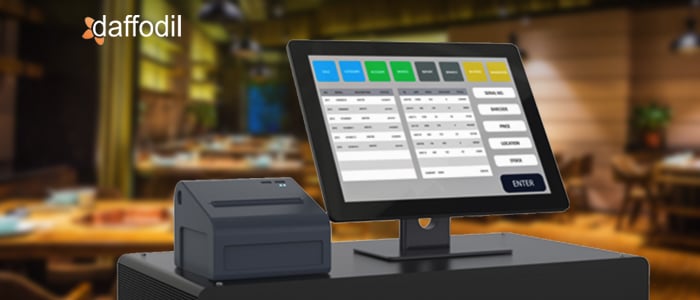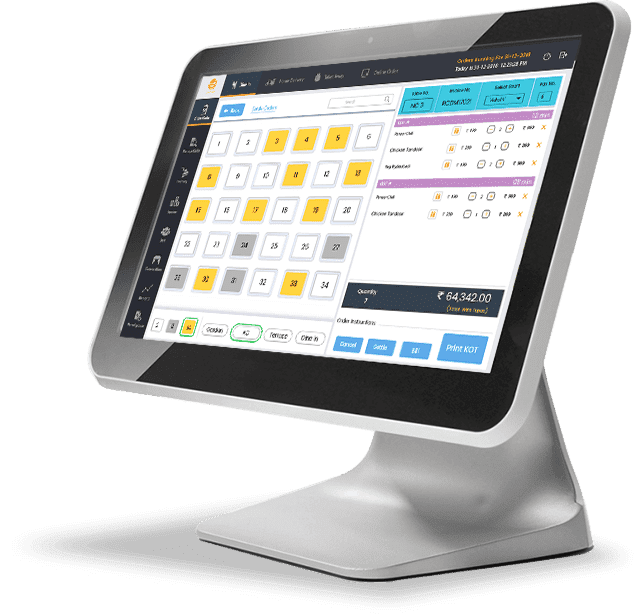Game-changing features in Restaurant POS Software for high-volume restaurants
Wiki Article
How POS System Functions: A Comprehensive Guide for Entrpreneurs
A POS system works as an important tool for modern-day services, incorporating different components to streamline procedures. It encompasses equipment like barcode scanners and software application up for sale monitoring. This system not just refines purchases however also handles supply and analyzes consumer behavior. Understanding its performance can considerably influence a company's performance and decision-making. What are the essential components that add to this efficiency? Discovering these components uses important understandings.Comprehending the Parts of a POS System
A Point of Sale (POS) system is made up of several essential elements that work together to help with purchases and take care of business procedures. At its core, the hardware includes gadgets such as a money register, barcode scanner, invoice printer, and settlement incurable, all crucial for refining sales (Restaurant POS Software). The software application part handles stock, sales tracking, and customer data, providing beneficial insights for organization decisions.Additionally, data sources save purchase records and consumer information, making sure information honesty and protection. Network connectivity allows real-time updates and access to cloud-based solutions, improving functional performance. Customer user interfaces, developed for convenience of use, permit team to navigate the system rapidly, minimizing training time. Together, these elements produce a cohesive system that improves the sales procedure, enhances customer support, and help in reliable monitoring of company resources. Understanding these components is essential for entrepreneur seeking to maximize their POS systemsHow Sales Transactions Are Refined
When a consumer makes a decision to buy, the sales purchase starts a series of systematic actions within the POS system. The cashier inputs the things being acquired, which are scanned with a barcode visitor or manually gotten in. This activity obtains item information, consisting of prices and relevant taxes, from the system's database.Next, the customer exists with the total quantity due. The POS system then refines the settlement, whether through cash, credit rating card, or mobile settlement techniques. For digital payments, the POS firmly interacts with settlement cpus to license and confirm the transaction.Once the settlement is validated, the system generates an invoice, which can be printed or sent digitally. This invoice acts as proof of purchase for the client. The transaction data is recorded in the system, ensuring exact sales documents and monetary tracking for the business.Supply Monitoring and Monitoring
Effective stock administration and tracking are crucial parts of a POS system, as they ensure that businesses keep optimal supply degrees and decrease discrepancies. A robust POS system enables real-time stock updates, mirroring sales and returns instantaneously. This makes it possible for local business owner to keep an eye on stock degrees properly, ensuring that popular products are readily offered while protecting against overstocking of less prominent products.Additionally, advanced POS systems offer functions such as automated supply signals and reorder tips, improving the procurement procedure. Barcoding and RFID innovation improve accuracy in tracking stock movement, decreasing human error. Extensive reporting devices supply understandings right into supply turn over rates, assisting organizations make notified decisions concerning buying and item offerings. Inevitably, reliable inventory management with a POS system not just boosts functional efficiency yet additionally boosts customer contentment by ensuring item availability.
Evaluating Client Data and Insights
Consumer data analysis acts as an effective device for companies using a POS system. By gathering and checking out purchase data, services can discover beneficial understandings concerning customer address habits and choices. This evaluation enables them to identify purchasing fads, peak purchasing times, and preferred products, thus notifying stock choices and marketing strategies.Additionally, services can section their customer base, allowing for individualized marketing efforts that provide to specific demographics or purchasing habits. Comprehending consumer commitment patterns also aids in establishing targeted promotions and incentives programs.The data gleaned from go to this site a POS system can likewise reveal understandings into consumer responses, allowing companies to make informed decisions relating to product offerings and solution improvements. Eventually, leveraging customer information properly can enhance the general buying experience, foster client contentment, and drive earnings growth.
Advantages of Implementing a POS System
Executing a POS system uses various advantages that can substantially improve service procedures. To start with, it improves purchase procedures, reducing wait times and improving customer contentment. By automating sales procedures, services can minimize human mistake and guarantee precise record-keeping. In addition, a POS system provides useful data analytics, making it possible for owners to track sales patterns and supply levels in real-time. This understanding supports informed decision-making, aiding to enhance stock management and advertising strategies.Moreover, many POS systems incorporate with various other company devices, such as accounting software, simplifying financial administration. Boosted staff member monitoring functions, such as tracking hours and efficiency, further add to functional efficiency.Lastly, the execution of a POS system can bring about increased profits via boosted client experiences and tactical understandings, inevitably promoting organization development and sustainability.
Regularly Asked Inquiries
What Sorts Of Companies Can Take Advantage Of a POS System?

How Much Does a POS System Typically Expense?
The expense of a POS system commonly varies from a few hundred to numerous thousand bucks, depending on attributes, hardware, and software program - Restaurant POS Software. Companies should consider continuous charges for upkeep, support, and transaction handling when budgeting
Can I Incorporate a POS System With Existing Software?
Incorporating a POS system with existing software program is usually viable. discover here Many systems supply APIs or integrated compatibility attributes, permitting services to streamline procedures and improve functionality by attaching various software program applications efficiently.What Training Is Required for Team to Utilize a POS System?
Educating for staff to use a POS system generally consists of understanding software application functionalities, refining purchases, taking care of inventory, and dealing with customer communications - Restaurant POS Software. Practical demonstrations and hands-on practice boost effectiveness and self-confidence in operation the system properlyWhat Happens if the Web Drops While Using a POS System?
If the web goes down during POS system usage, transactions might be interrupted. Numerous systems offer offline abilities, permitting fundamental operations to proceed, but full functionality, consisting of real-time supply updates, will be limited.Report this wiki page